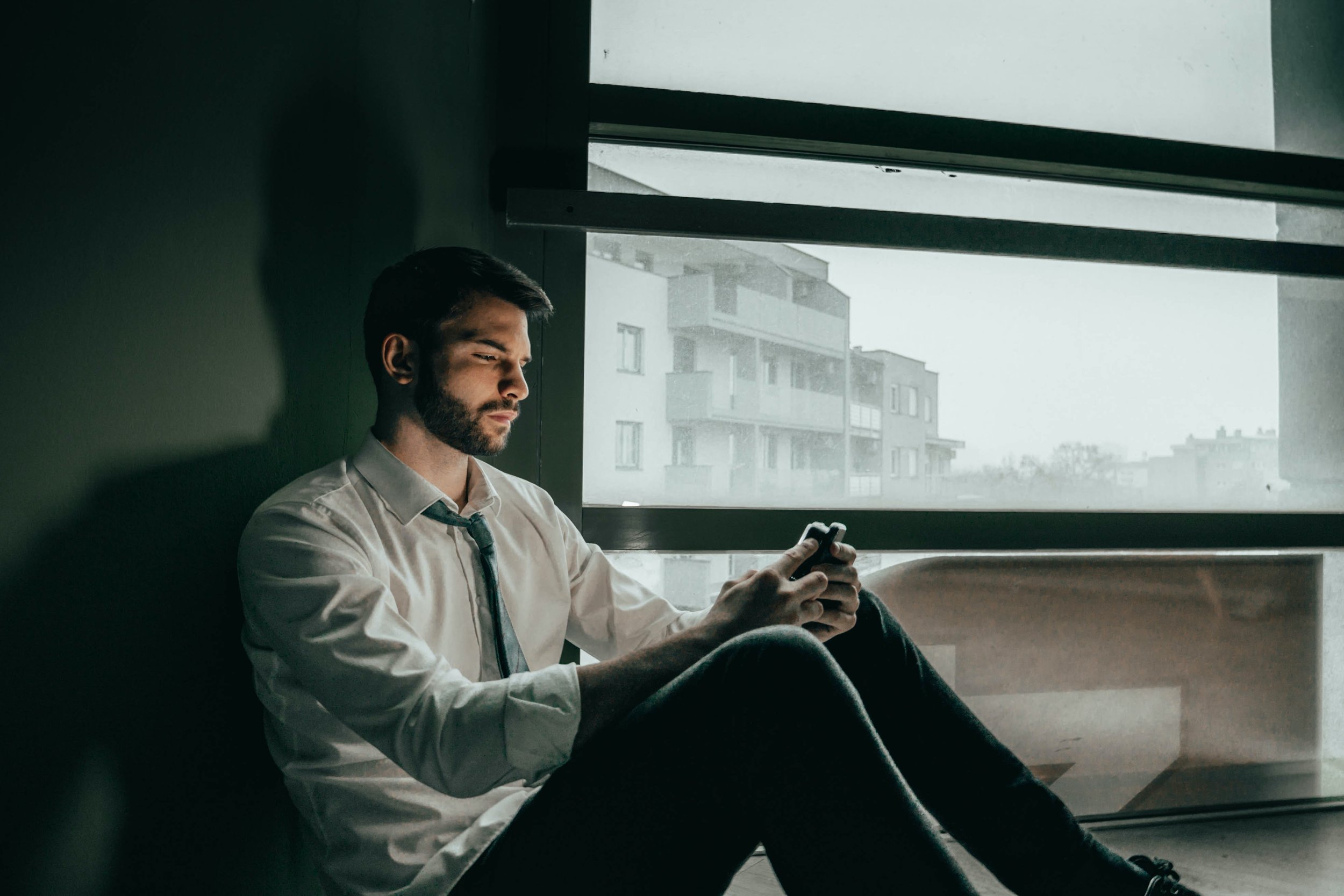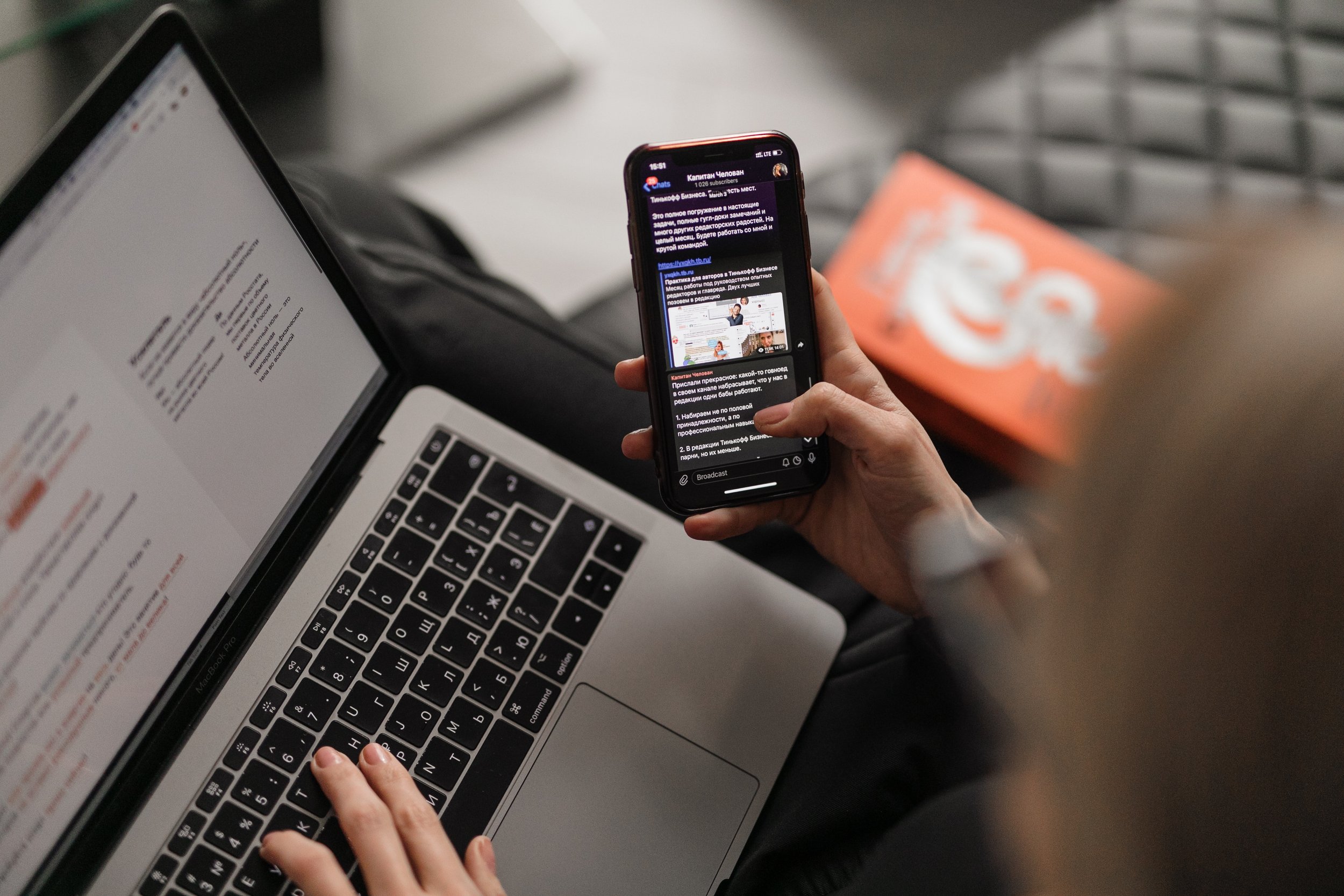Doomscrolling: When We “Need to Know,” Can’t Stop, and Find Ourselves Anxious
If you haven’t heard of it, you’ve probably done it. First coined in 2018 and leaping to prominence in 2020 both as a concept and a practice, “doomscrolling” is a new and unique phenomenon that has captured many, many people as they struggled to make sense of the Covid-19 pandemic and keep themselves and their loved ones safe. It continues now with the Russian offensive in Ukraine as the new doom darling of news media.
The current definition of doomscrolling in research circles is best summarized as:
The act of spending an excessive amount of time on social media newsfeeds with an obsessive focus on the absorption of negative news. Specifically, that which is distressing, depressing, or otherwise negative.
Put another way – in times of uncertainty people try to gather as much information as possible to better understand their situation. Unfortunately, the information they are trying to gather is usually bad and results in heightened distress, resulting in anxiety or depression, rather than less.
I recall way back on 9/11/2001 my family had CNN on the TV for the entire day. For hours there would be no updates, just the same information repeated endlessly, and yet we couldn’t turn off the TV. We felt a need to know as much information as possible, as soon as possible, and this was the best way to get it.
Then Facebook launched in 2004 and social media became a permanent part of our lives. Now, instead of keeping one ear open for the voice of Anderson Cooper saying “We have just received updates” we can snuggle into our couches or beds and scroll. And scroll. And scroll.
The psychology research community has, thankfully, taken quick interest in doomscrolling so that despite it being a new phenomenon we already have some answers. This study here has developed a technique for measuring doomscrolling which will allow future researchers to continue to study and make sense of this apparent obsession with negative news.
We’ve introduced doomscrolling, and we’ve defined it. Let’s talk more about it, and more importantly, what we can do about it.
Who Engages in Doomscrolling?
Initial research has identified doomscrolling as a distinct concept, although it appears to be related to other online activities such as online vigilance, problematic use of the internet/social media, fear of missing out (also called FOMO). Doomscrolling has also been linked to the following:
· Passive social media use
· Habitual media use
· Anxiety
· Poor self-control
· Multiple personality traits
If you recognize yourself in any of the above you may be more susceptible to doomscrolling. Additionally, men, younger adults, and the politically-engaged have been found more likely to engage in doomscrolling.
The truth is, though, most people have engaged in doomscrolling at some point in their life. We are, in fact, hardwired to do so.
Why Do We Doomscroll?
It should be noted that it is currently unclear whether doomscrolling leads to anxiety or if anxiety leads to doomscrolling. However, the current hypothesis is they feed off each other. That is where I place my money as always seems to be the way with psychology.
Doomscrolling, at its root, is a manifestation of our biological programming. We are programmed to scan for threats. Two-thirds of the cells in our amygdala are dedicated to scanning for threats. The more threats and challenges we encounter over a set span of time the more and more hyper-vigilant we get.
My clients who were the calmest about their Covid-19 hypervigilance where actually the ones with PTSD. Hypervigilance is a symptom of PTSD and indicates a person’s amygdala has gone “code red” and is scanning for threats constantly and without stopping just about every waking minute. They recognized it and knew it for what it was.
Back to that biology. We were designed for threats that we can confront – move away from or scare off a predator, chase a challenger off our land, etc. We were not designed for threats that we can do nothing about.
When the threat is a one-time event, such as a natural force like a hurricane, there is a time limit. We hurricane-proof our homes and seek shelter. At some point the hurricane will make landfall and pass through, and then we clean up. Doomscrolling, while still not productive, also then has a time limit.
A pandemic or a war, however, does not have a set time limit. It can feel inescapable. In these cases, like so many things in our world we are applying our outdated evolution to modern problems. We are trying to gather as much information as possible so we are as well-equipped as possible to confront the threat. Except it is a threat we cannot meet and neutralize in the way we did before civilization. Knowing everything about the Russian attack on Ukraine does not allow us to win the war. Knowing the most current by-the-minute information on Covid-19 does not actually allow us to beat it off with a weapon.
So, It’s Better Just Not to Engage with the News?
Certainly not. Being informed is beneficial. The difference is that doomscrolling goes well beyond the point of gathering useful information.
How Do I Stop Doomscrolling?
Set boundaries – limit when, where, and for how long you engage with your newsfeed. Maybe it is only at breakfast or only after work or absolutely not in bedroom (highly recommended). If you tend to scroll in the evenings absolutely set an alarm to put your newsfeed away at a certain time, preferably a few hours before bedtime.
Avoid confirmation bias – there is no shortage of poor-quality information out there. Social media platforms are also designed to push forward content that resembles what you have already engaged in. Look at the sources critically.
Try kindness-scrolling – Studies suggests that kindness-scrolling may give us those feel-good “hits” that are the opposite to doomscrolling’s feel-bad ones. That may be encouraging your social media friends to post funny pictures, or starting a “say something you like about X” thread. It can also be finding positive videos whether its uplifting TicToks or videos of pets getting adopted.
Remember how this is all designed – Current news media does not stop. It runs 24/7. It also plays on our negativity bias, meaning it specifically targets our brains’ bias for seeking out threats.
No matter how much media you consume there will always be more. There is no way to “catch up” on all the news anymore. So set boundaries. If something really important happens you will definitely hear about it.
Begin Anxiety Treatment for Doomscrolling in Chicago, IL
As said before, doomscrolling is anxiety provoking and creates a lot of negative thought patterns. You deserve healing from the worry that constantly bogs your mind. Find ways to be more present in life and gain tools to manage anxiety with our anxiety therapists. To get started for doomscrolling anxiety at our Chicago, IL-based therapy practice, take these steps:
Fill out a contact form.
Meet with an anxiety therapist to discuss their intervention treatments.
Start the healing you deserve!
OTHER SERVICES AT OBSIDIAN COUNSELING AND WELLNESS
With evidence-based therapy tools, our therapists help folks in addressing depression, trauma (including the treatment of complex PTSD), and work stress. Additionally, one of our more unique services is yoga therapy, which can also be done using online therapy sessions. We also specialize in supporting LGBTQIA+ folks and highly sensitive people for a variety of struggles. Additionally, we support new parents during times of transition. We know that healing takes time, and our therapists want to be a guide along that journey for you.



